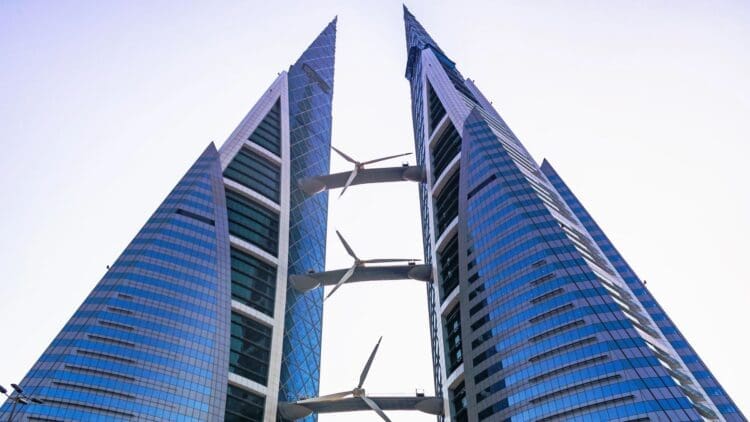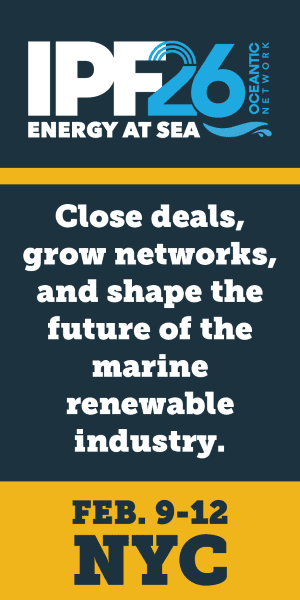A revolutionary architectural marvel has emerged from the Arabian Gulf that is challenging all we thought we knew about sustainable skyscrapers. This is the first of its kind structure that doesn’t use traditional solar panels or traditional renewable energy systems, but it produces massive amounts of clean electricity. While being a prestigious commercial center, the luxury energy tower is located in one of the world’s most energy-intensive regions, where innovation meets necessity.
Bahrain World Trade Center pioneers integrated wind technology
The installation of wind turbines in sufficient numbers in a commercial building design is the first instance in the world where innovative engineering and architecture truly met with genius. Located in the central business district of Manama, this 240-meter twin tower development has three horizontal-axis wind turbines that are suspended between sail-inspired office structures that take advantage of the consistent Arabian Gulf breeze on shore.
Design Director Shaun Killa from W.S. Atkins developed the idea of using nautical sail expressions to harness the power of wind and create these beautiful architectural forms that will transcend time. The elliptical plan forms and sail-like structures act as aerofoils concentrating the onshore breezes between the towers while producing negative pressure behind the towers, in effect accelerating the onshore breeze velocity.
The vertical sculpting of the towers has aerodynamic values; they have a shape that is aerofoil and tapered upwards, with reducing Aerofoil sections. This construction, coupled with the growing wind speed at greater altitudes, is designed such that there is almost uniformity in the wind regimes of all three turbine levels, and this allows maximum energy generation and minimal fatigue of the blade during the wind skew situations.
Three turbines produce significant renewable energy production
All of the turbines are 29 meters in diameter with a nominal power of 225kW with stall-controlled technology, which limits power generation passively on high wind days. The turbines have a wind azimuth operating range of 60 degrees and automatically switch to the standstill mode when the wind is outside the optimal range.
Revolutionary design produces amazing annual energy yields
The integrated wind system generates between 1,100 and 1,300 MWh of energy per year, which accounts for between 11% and 15% of the office towers’ total consumption of electrical energy. This sizeable renewable energy contribution equates to substantial reductions in carbon emissions equivalent to 2,900 kg carbon from oil-burning power stations or 2,000 kg carbon from gas-burning.
The funneling effect between towers increases the wind speed at the locations of turbines by as much as 30%, with the upper and lower turbines set to generate 109% and 93%, respectively, compared to the middle turbine set to generate 100%. This fairly balanced energy yield shows all the sophisticated aerodynamic engineering that was used in the architectural design. The bridges that connect the towers span 31.7 meters in total and include bearings that have no maintenance services, thus permitting 0.5 meters of movement relative to each other.
Technical specifications:
- Tower height: 240 meters (787 feet)
- Turbine diameter: 29 meters each
- Annual energy output: 1,100-1,300 MWh
- Power per turbine: 225kW nominal
Design criticism reveals possible improvements in efficiency
The reversing of the tower can potentially enhance energy production by 14%; Professor Bert Blocken of Eindhoven University was told by measurements in the wind tunnel and the computer that there was a way to do it. His own research indicates that with wind turbines further back, it may be possible to achieve 31% higher annual energy generation.
The Bahrain World Trade Center is a breakthrough in the realm of sustainable architecture by proving the fact that the incorporation of renewable energy can even contribute to the increase in the aesthetic value instead of its reduction. This pioneering project has set a new standard of consensus in integrating wind energy systems in urban, high-rise developments, with the commercial viability and architectural excellence preserved in the difficult desert climate conditions.
Disclaimer: Our coverage of events affecting companies is purely informative and descriptive. Under no circumstances does it seek to promote an opinion or create a trend, nor can it be taken as investment advice or a recommendation of any kind.






